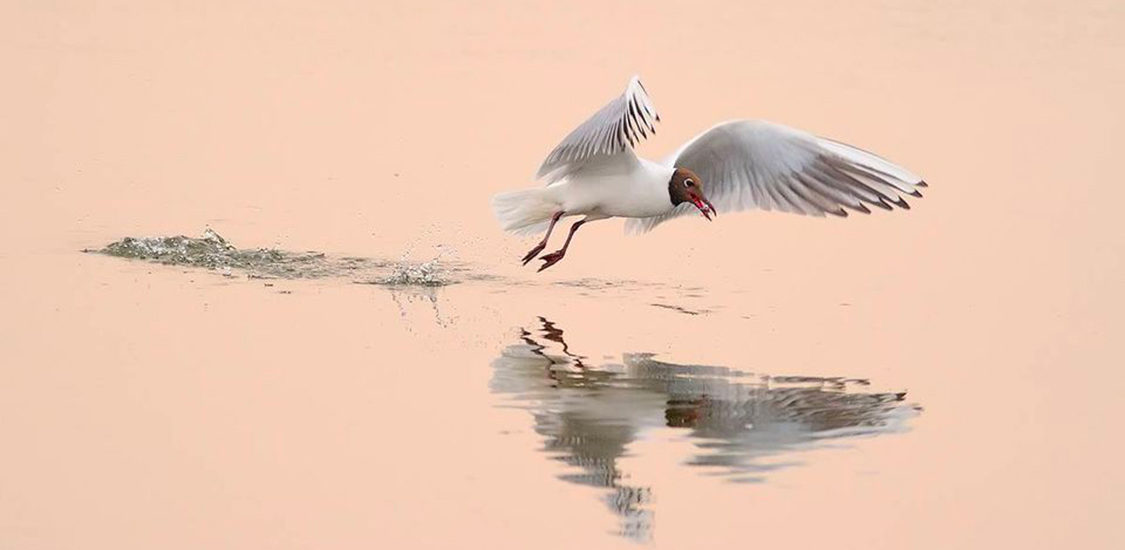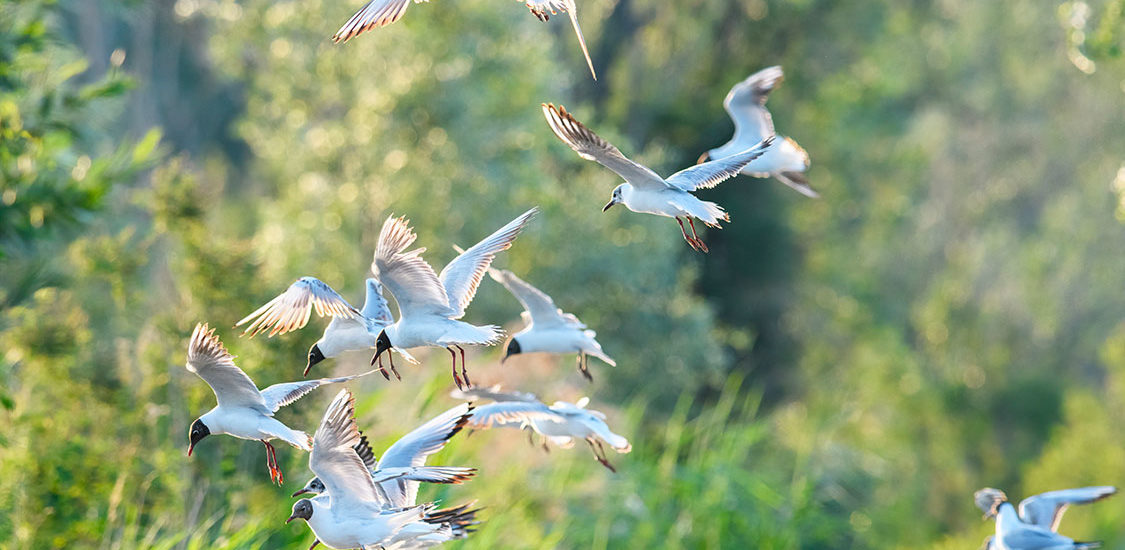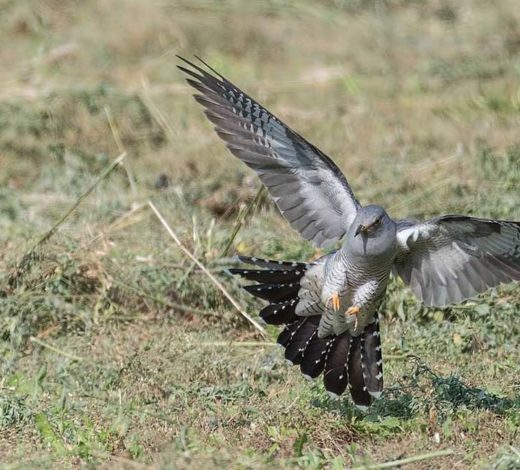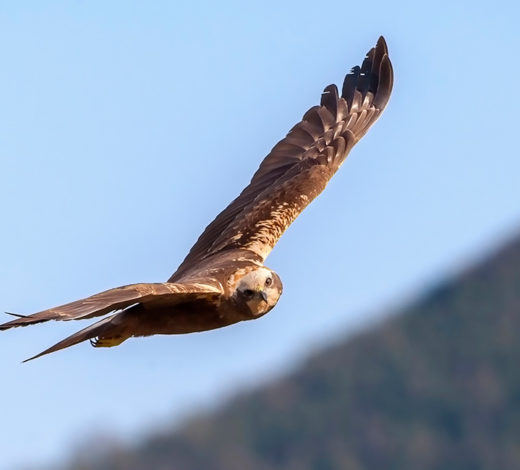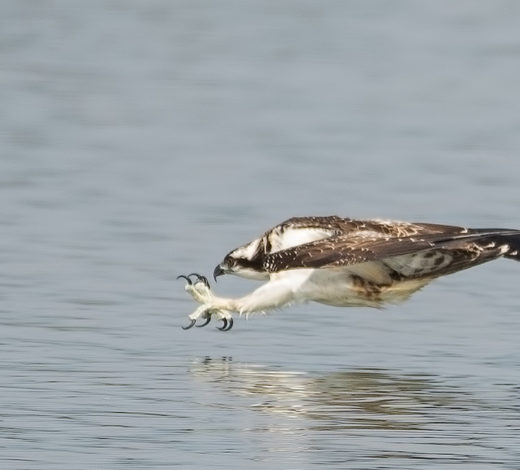Black-Headed Gull
(Chroicocephalus ridibundus)
For years, gulls have been moving away from the seashores, colonizing Italian inland areas, including the Province of Brescia, especially outside the reproductive period.
Description
Adult black-headed gulls are all white with light grey wings with black tips and a black crown, while the young are speckled with brown. Wingspan: up to 110 cm. Length: 35 cm. In summer, adults adorn themselves with a black-brown hood that covers the head and throat, leaving the nape white, while the eyes are edged with a thin white ring. In winter the hood gives way to a small spot on each side of the head.
Habitat
It prefers marshy environments, rivers, seashores, lagoons, and lakes, and in winter, water meadows, cultivated fields, and landfills.
Observation in the Torbiera Reserve
The Province of Brescia is an important wintering location for birds in the Laridae family (especially black-headed gulls, followed by yellow-legged gulls and common gulls), which commonly group in large numbers at sunset to sleep on the larger lakes. Still as a group, they visit landfills and open country areas to feed at dawn. For many years, careful censuses have been conducted in the evening in January, when hundreds return to the sleeping areas (one of which is Lake Iseo). Various black-headed gulls can be seen in the Reserve, especially in autumn and winter, while few individuals remain in summer.
